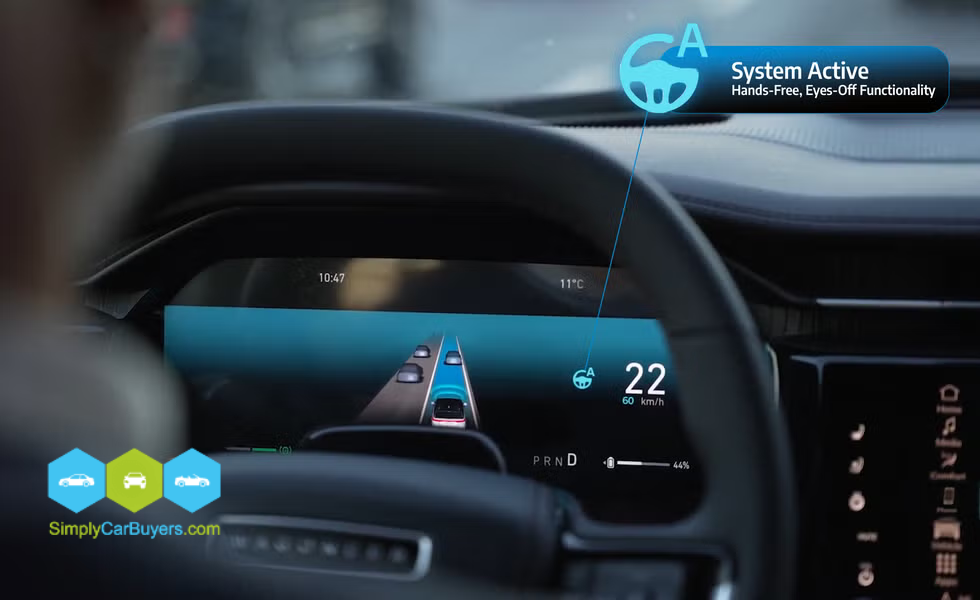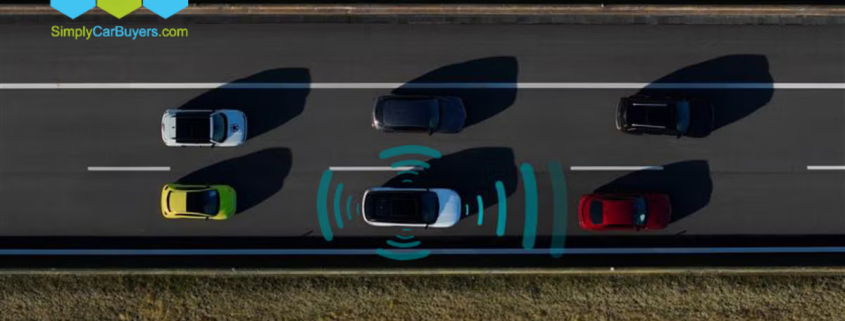Stellantis Level 3 Self-Driving: Autonomy Unveiled
The automotive industry is witnessing a revolution, and Stellantis is at the forefront with its latest innovation: the Stellantis Level 3 self-driving function. Revealed in a recent article by Car and Driver on February 20, 2025, this advanced autonomous driving system, dubbed STLA AutoDrive, promises to redefine how we experience vehicles. Stellantis, the parent company of iconic brands like Jeep, Chrysler, Dodge, and Alfa Romeo, has developed a hands-free, eyes-off technology that allows drivers to relax in specific conditions. However, despite its readiness, the system isn’t hitting the roads just yet. Let’s dive into what makes this technology a potential game-changer, its features, limitations, and what the future holds.
 What Is the Stellantis Level 3 Self-Driving Function?
What Is the Stellantis Level 3 Self-Driving Function?
The Stellantis Level 3 self-driving function, known as STLA AutoDrive, is an SAE Level 3 autonomous driving system. Unlike Level 2 systems, which require constant driver supervision, Level 3 autonomy allows drivers to take their hands off the wheel and eyes off the road under certain conditions. This means you could watch a movie, check emails, or simply enjoy the ride—provided the car is traveling at speeds below 37 mph (60 km/h). Stellantis spokesperson Dan Reid emphasized that the technology is fully developed and ready for deployment, but the company is waiting for the right market conditions to launch it commercially.
This system is designed for urban commuters, excelling in stop-and-go traffic scenarios. It operates reliably at night and in challenging weather, such as light rain, making it versatile for real-world use. Stellantis aims to evolve this technology further, with plans to increase its speed capability to 59 mph and even add off-road automation for brands like Jeep.
For more insights into autonomous driving levels, check out this detailed guide by SAE International.
Key Features of STLA AutoDrive
Here’s a breakdown of what sets the Stellantis Level 3 self-driving function apart:
| Feature | Description |
|---|---|
| Hands-Free Operation | Drivers can remove hands from the wheel at speeds up to 37 mph. |
| Eyes-Off Capability | No need to monitor the road constantly, though drivers must stay alert to intervene if needed. |
| Weather Resilience | Functions at night and in light rain, with automatic sensor cleaning. |
| Urban Focus | Ideal for dense city traffic, reducing driver stress in stop-and-go conditions. |
| Scalable Technology | Built to evolve with higher speeds and off-road capabilities in the future. |
These features position STLA AutoDrive as a competitor to systems like Mercedes-Benz’s Drive Pilot and BMW’s Personal Pilot, both of which also offer Level 3 autonomy.
Why Isn’t It Available Yet?
Despite its readiness, Stellantis has opted to delay the rollout of its Level 3 self-driving function. According to Car and Driver, the company cites a “very limited” current market for Level 3 autonomy. Regulatory hurdles also play a role—laws vary by region, and some areas, like parts of the U.S. and Europe, restrict such systems to specific conditions (e.g., speed limits or designated zones). For instance, Mercedes’ Level 3 system is capped at 37 mph and limited to certain highways in Germany and select U.S. states.
Stellantis is strategically waiting for consumer demand and regulatory frameworks to catch up. This cautious approach could pay off, ensuring a smoother launch when the time is right. Curious about global autonomous driving regulations? Explore this comprehensive overview by the UNECE.
How Does It Compare to Competitors?
The autonomous driving race is heating up, and Stellantis isn’t alone. Here’s a quick comparison:
| Automaker | System | Speed Limit | Availability |
|---|---|---|---|
| Stellantis | STLA AutoDrive | 37 mph | Ready, not launched |
| Mercedes-Benz | Drive Pilot | 37 mph | Available in select regions |
| BMW | Personal Pilot | 37 mph | Rolling out in 2025 |
| Tesla | Full Self-Driving | Varies | Level 2+, beta phase |
While Tesla’s Full Self-Driving (FSD) garners attention, it remains a Level 2+ system, requiring constant driver attention. Stellantis’ STLA AutoDrive, with its true Level 3 capability, offers a more relaxed experience, though its speed restriction limits its use to urban settings for now.
The Future of Autonomous Driving with Stellantis
Stellantis isn’t stopping at Level 3. The company hints at future upgrades, including higher speed limits and off-road autonomy—perfect for Jeep enthusiasts. This scalability reflects Stellantis’ broader vision under its Dare Forward 2030 plan, which aims to integrate cutting-edge tech across its 14 brands. Imagine a Jeep Wrangler navigating trails hands-free or a Chrysler Pacifica cruising highways at 59 mph with minimal driver input—the possibilities are exciting.
The delay in launching STLA AutoDrive also suggests Stellantis is prioritizing refinement. By the time it debuts, it could outshine competitors with enhanced reliability and broader applicability. For the latest updates on Stellantis’ tech advancements, visit their official site.
Conclusion
The Stellantis Level 3 self-driving function marks a bold step into the future of mobility. With STLA AutoDrive, Stellantis offers a glimpse of stress-free urban driving, blending innovation with practicality. While it’s not available yet, its readiness signals a shift toward mainstream autonomous vehicles. Whether you’re a Jeep fan or an Alfa Romeo enthusiast, this technology could soon transform your driving experience. Keep an eye on Stellantis as it navigates market and regulatory landscapes—when STLA AutoDrive hits the road, it might just redefine autonomy.



